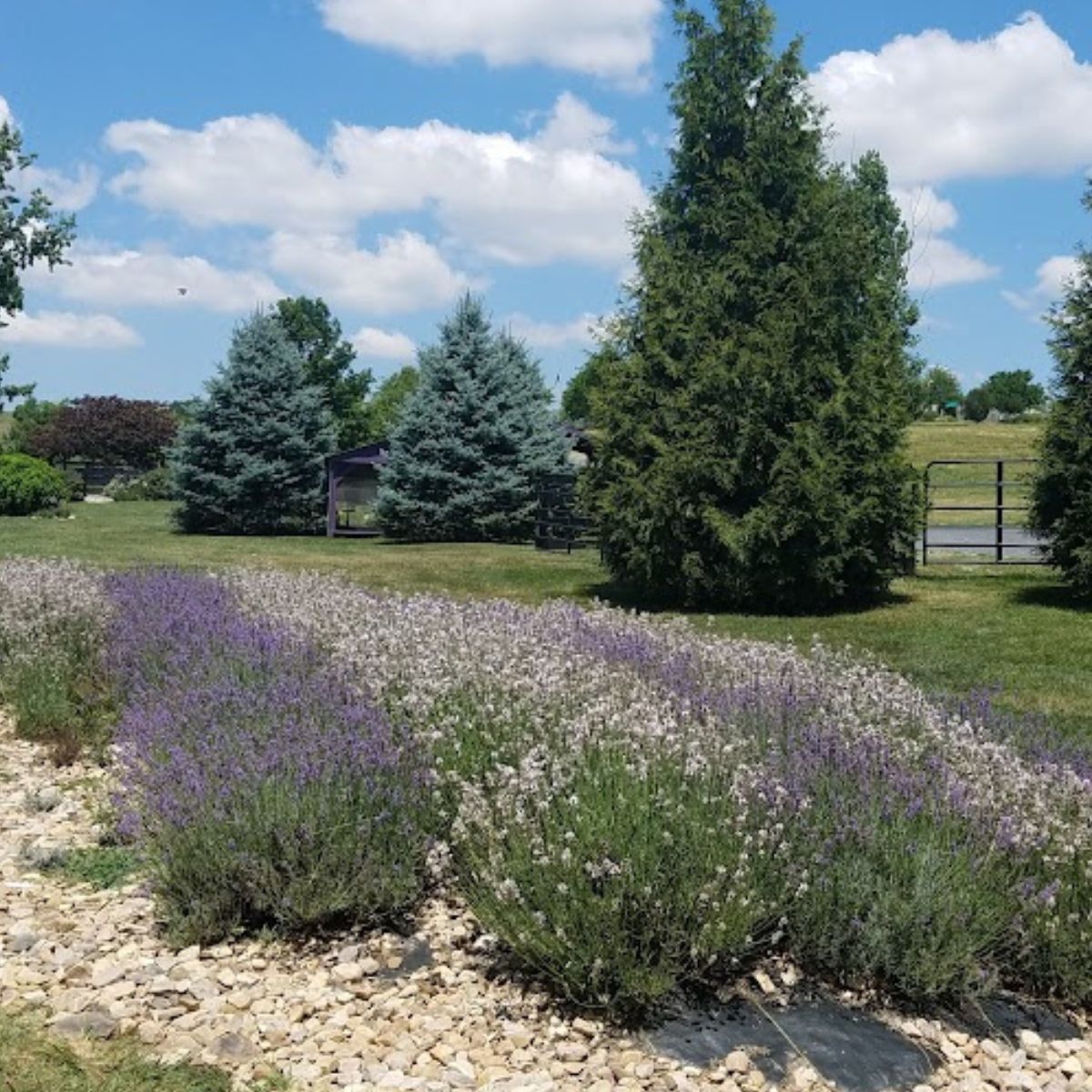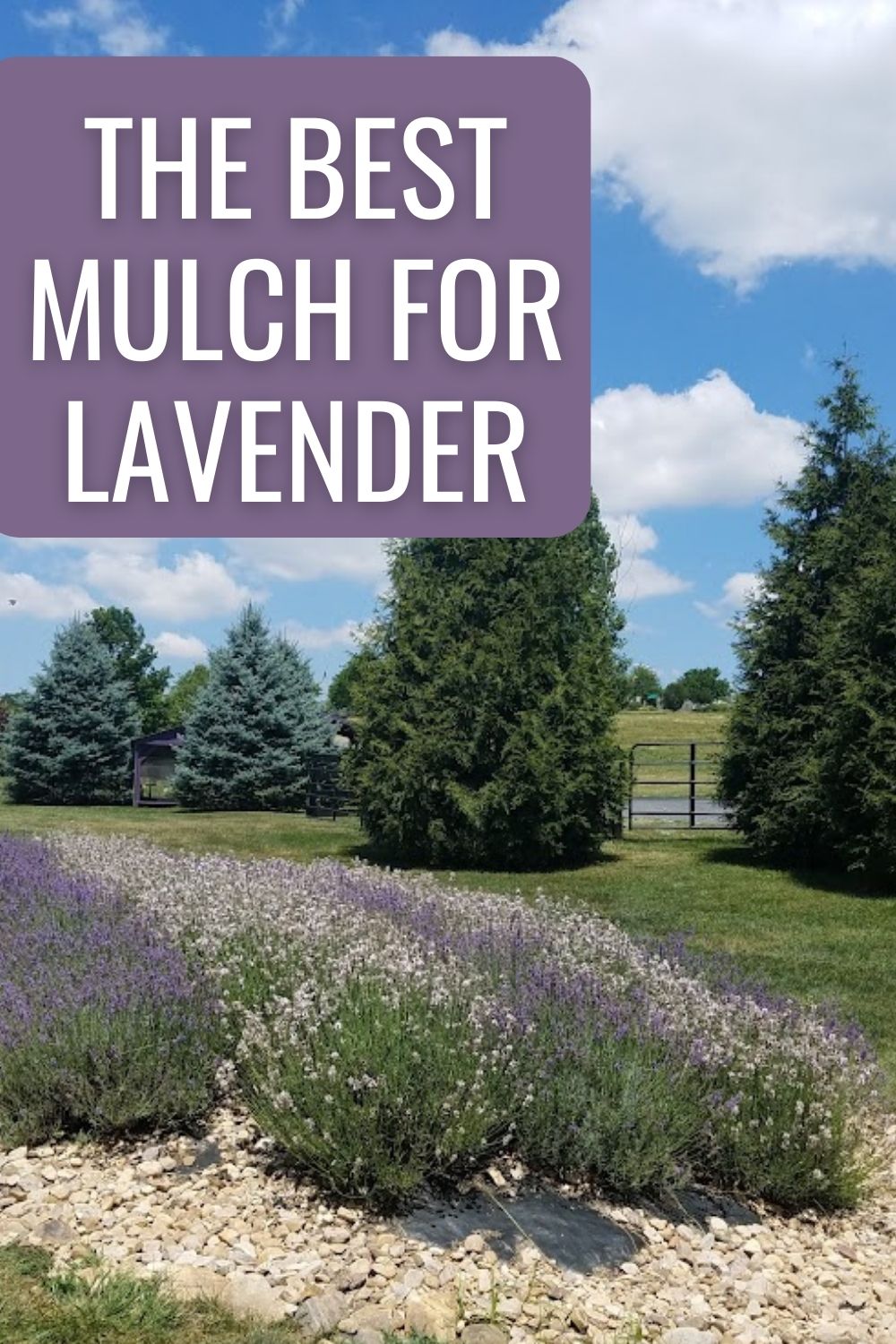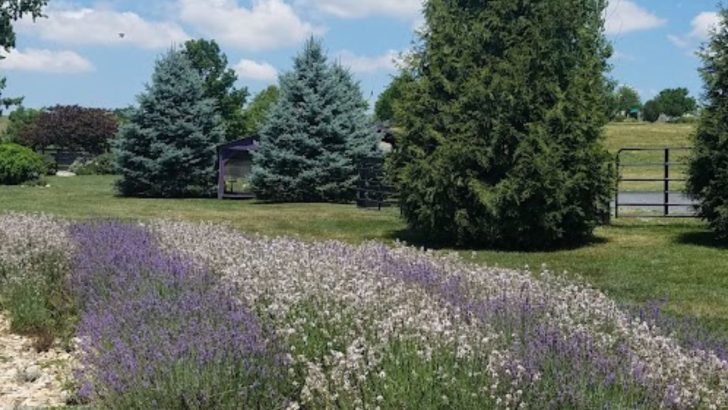Although lavender grows best in dry, well-drained soil, it still benefits from mulch, which has other uses beyond improving water retention. First, adding mulch around lavender plants will help reduce weeds. Weeds, of course, compete with lavender for space and nutrients, and they can also increase humidity and soil moisture and act as disease vectors.
Additionally, mulch protects the soil surface from heavy rain, which can cause runoff as well as break up soil aggregates into finer particles and clog the pores of the soil. This reduces the oxygen content and drainage of the soil, both of which are important for healthy lavender.
Not just any mulch will do, however. The best mulch for lavender will reduce weeds and protect the soil without holding in excess moisture and causing rot. It will also depend on your specific growing conditions.

Best Mulch for Lavender
What works for one grower doesn’t necessarily work for all, though there are a few guidelines we can count on. When mulching lavender, it is best to avoid wood chips and other organic mulches, as these tend to keep the soil too moist and invite slime mold and fungal diseases.
Light colored mulches reflect heat, whereas darker mulches will absorb heat, potentially burning the plants. For this reason (among others), some growers choose to combine mulches, such as black weed barrier fabric topped with white gravel.
The mulches below represent some of the most common and most recommended types for lavender. While these may be considered the best mulches for lavender in general, this list is certainly not comprehensive. Some growers have found success using sand or even organic mulches like leaves or cedar mulch, especially between rows. I suggest choosing one of the options below, especially if you’re just getting started, but feel free to experiment and see what works best in your situation.
1. Pea gravel
Pea gravel is one of the most popular options for natural lavender mulch. These tiny pebbles are attractive and readily available in lighter shades that will reflect rather than absorb heat. Plus, a layer of pea gravel over bare soil helps discourage weed growth and protect the soil from erosion, without locking in excess moisture.
The main downsides are that, being a loose mulch, pea gravel can escape the bounds of the lavender bed and may need to be raked up periodically. Weeds will also eventually push through in places and require pulling by hand.
2. Dirty rock
Despite its unappealing name, dirty rock is an excellent, cost-effective alternative to pea gravel if you live near a limestone quarry. This crushed limestone is a byproduct of quarries and thus still has residual dirt mixed in. However, the dirt will wash off after getting rained on a few times, transforming the rock from reddish to almost white.
Dirty rock has the same advantages and disadvantages as pea gravel.
3. Crushed oyster shells
If you live near the coast, consider using crushed oyster shells as mulch for lavender. Oyster shells share benefits (and downsides) with pea gravel and dirty rock, and they come cheaply and readily available as a byproduct from coastal canneries. Plus, at least one grower has discovered that lavender grown with oyster shells tilled into the soil grew larger and healthier than lavender grown without; using oyster shells as a mulch may have similar effects.
4. Landscape fabric
Landscape fabric, or weed barrier fabric, is one of the least time-consuming mulches for lavender, though it certainly has some drawbacks of its own. This woven black plastic effectively blocks out weeds while still allowing air and water to move through, which means that unlike with loose mulch, you shouldn’t have to pull any weeds at all. If you don’t like the appearance, you can also add a thin layer of gravel on top.
But do not skimp on landscape fabric; choose a durable, high quality fabric designed to last many years. Otherwise, it will quickly deteriorate, leaving bits of plastic in the soil and surrounding environment, opening up holes for weeds, and making it difficult to remove and replace. Even a high quality fabric will eventually begin to deteriorate and need replacing.
Landscape fabric can also encourage vole and gopher activity, so if you already struggle with these small mammals, loose mulch may be a better option.
5. Clover
Although you don’t want plants growing right up under your lavender, clover makes a great living mulch between rows. Unlike grass, it does not grow very tall and only needs occasional mowing during the lavender growing season. Clover also grows densely, preventing weeds from growing up in the paths. Choose a native clover species, if possible, rather than planting one of the more common nonnative varieties.
6. Frost blanket
Lavenders grown in areas with especially cold winters will appreciate some extra winter protection. Some growers recommend a thick layer of straw, but this can hold moisture and cause rot, and it’s difficult to completely remove in spring. The simplest and perhaps the best option is to purchase a quality frost blanket to cover the plants with during the winter months. Burlap also works well and has the added benefits of being cheaper and biodegradable.
Depending on your specific growing conditions, preferences, and available resources, you will likely find one of the above options more appealing than the rest, or perhaps a combination of several mulches seems fitting. Regardless of what you choose, your lavender will thank you for adding a layer of protection.
Learn More About Growing Lavender
- how to grow lavender from cuttings
- how to grow lavender for fun and profit
- the best lavender fertilizer
- the best potting soil for lavender
- common lavender problems and how to solve them
- How to revive a dying lavender
- how to prune lavender
- companion plants for lavender





How To Prune Lavender: Tips For Healthy And Attractive Growth
Sunday 16th of April 2023
[…] the right mulch for lavender […]
How To Grow Lavender From Cuttings In 6 Easy Steps
Sunday 22nd of January 2023
[…] The proper lavender mulch […]
The Best Fertilizer For Lavender
Tuesday 17th of January 2023
[…] The best mulch for lavender plants […]
9 Common Lavender Problems And How To Solve Them
Tuesday 17th of January 2023
[…] soil with a pH of 5.8-7.0 – and avoid overwatering and adding lots of organic matter (use dirty rock to mulch lavender). If you have heavy clay soil, double dig or use a broadfork and incorporate sand to loosen the […]
Different Types Of Lavender {With Pictures} And Fun Ways To Use Them
Tuesday 17th of January 2023
[…] What mulch to use for lavender […]